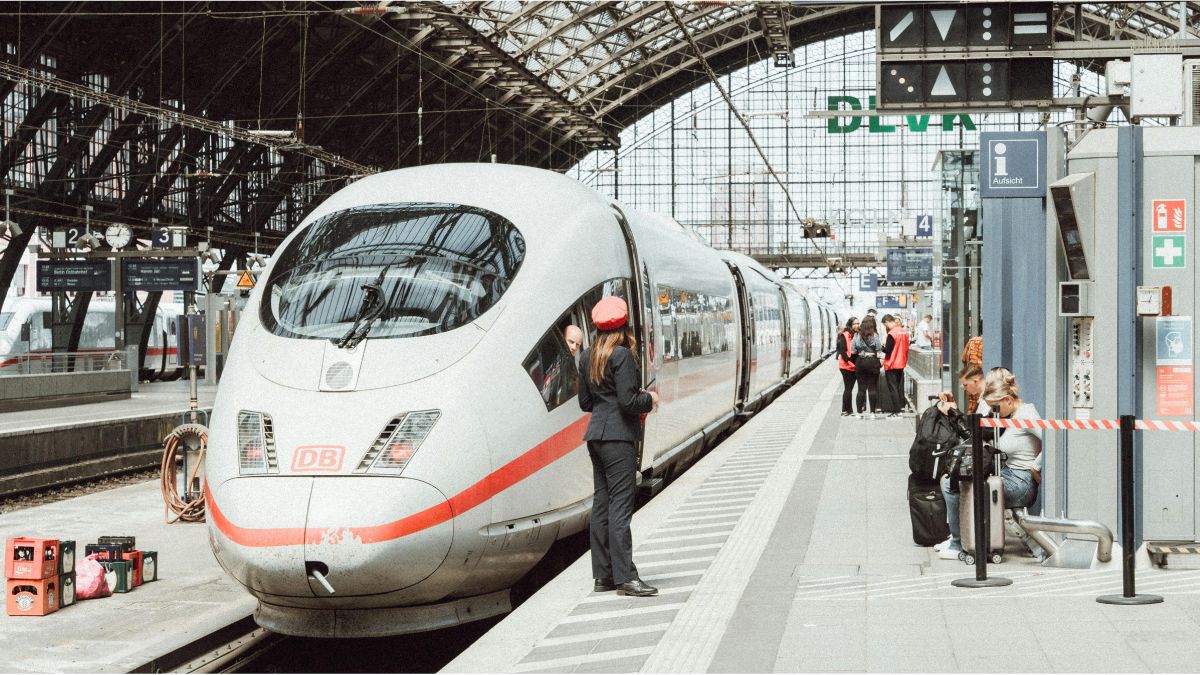Germany’s national rail operator Deutsche Bahn (DB) has revealed its latest ICE L train series — a next-generation model designed to make train travel more accessible, comfortable, and digital-ready. The new fleet, built by Spanish manufacturer Talgo, will enter service at the end of 2025.
While DB still struggles with delays, it now promises passengers something different: greater comfort and easier access.
Step-free boarding and improved accessibility
The standout innovation of the new ICE L is its barrier-free entry. For the first time, passengers in wheelchairs or with strollers can board without any steps or ramps.
Each train includes three wheelchair spaces equipped with height-adjustable tables, ensuring accessibility throughout the journey.
This marks a major improvement in DB’s long-standing goal to make rail travel fully inclusive. The low-floor design aligns platform height with the train entrance — eliminating one of the most common obstacles for passengers with reduced mobility.
More space, smarter design, and better connectivity
The 17-car trainset (including a control car) offers 562 seats — 85 in first class, 46 in a dedicated family compartment, and the remainder across second class and the on-board restaurant.
Inside, everything has been redesigned:
- Larger luggage racks and ergonomic seating for long journeys
- Improved window technology that allows stronger mobile signals for uninterrupted phone and data reception
- Personal device holders for smartphones and tablets
- Individual power sockets at every seat
Deutsche Bahn promises that the new interior will deliver a “noticeably quieter and more comfortable” experience, combining modern aesthetics with functionality.
Technical details
Each ICE L train measures 256 meters in length and weighs about 406 tons.
The power output reaches 8,700 horsepower (6,400 kW), allowing a top speed of 230 km/h.
Although slightly slower than the flagship ICE 3neo, the ICE L is optimized for energy efficiency and regional intercity routes, bridging the gap between long-distance and medium-distance travel.
Routes and rollout plan
The new fleet will first operate on the Berlin–Hanover–Münster/Cologne route. From May 2026, it will also connect Berlin, Hamburg, and Westerland (Sylt).
By mid-2026, additional north–south services will follow — including Frankfurt, Bremen, Stuttgart, and Dortmund.
DB CEO Evelyn Palla said the company aims to inspire passengers with improved quality and reliability:
“With the new ICE L, we are clearly focusing on comfort and consistency. We want people to enjoy traveling with us again.”
“The customer must once again be king”
Federal Transport Minister Patrick Schnieder (CDU) welcomed the innovation, describing the new trains as an example of how the rail sector can rebuild public trust:
“From the very beginning, my message was clear — passengers must once again be treated as kings of the railway. This train shows what that looks like.”
The ICE L project is part of Deutsche Bahn’s broader modernization strategy: upgrading infrastructure, improving punctuality, and renewing its rolling stock to meet rising demand for sustainable transport.
A new chapter for German high-speed rail
As Germany pushes to shift more travel from air to rail, the new ICE L represents both a technological and symbolic milestone:
Faster boarding, better digital connectivity, and increased comfort — a modern train built to make rail the preferred mode of travel across the country.









